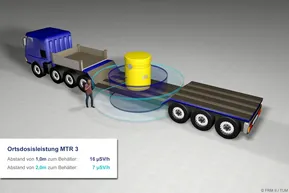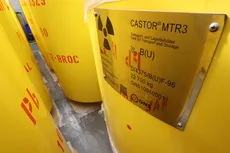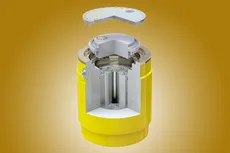The container
When transporting and storing the fuel elements, the operator (FRM II) prioritises the protection of people and the environment.
This protection is already guaranteed by the solid metal construction of the cask used, which weighs several tonnes. The CASTOR® MTR3 is a transport and storage cask specially designed for fuel elements from research reactors. It consists of a cast body, a cage and a double lid system with metal seals. It safely and tightly encloses five FRM II fuel assemblies.
The cask series has proven in tests that it is safe even under extreme conditions. This is the only reason why the CASTOR® has received official approval for its general use as a transport and storage cask.
Radiation protection

During transport, the legally prescribed limit value for the local dose rate ("radiation") is reliably complied with.
The calculations for this have shown that the legally prescribed limit value for the transport of radioactive substances of 100 μSv/h ("microsievert per hour"), at a distance of two metres from the outer surface of the transport vehicle, is far below: The highest value calculated at this distance is 7 μSv/h local dose rate (ODL), i.e. less than a tenth of the permitted value.
For comparison: according to the Federal Office for Radiation Protection, this corresponds roughly to the high-altitude radiation to which one is exposed at an altitude of 10,000 metres.

